For once our day started at a civilized hour! We slept in till 7:00 AM! Decadence!
Since this morning's temple is on an island, we got to it via boat taxis.
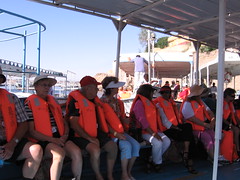
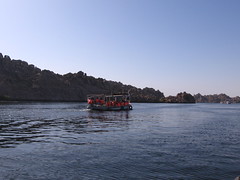
They're these canopied ferry boats that just go from the docks to Agilika Island where the temple is. It used to be on Philae Island, hence the name, but again it was located where it would go underwater when the Aswan High Dam was completed. In 1970, another Unesco operation moved the temple complex about 500 yards away to the higher Agilika Island and reassembled it.
As we approached in our boat taxi, we came around the curve of the island and saw the temple:
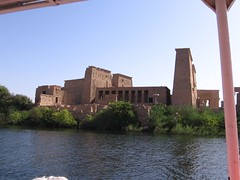
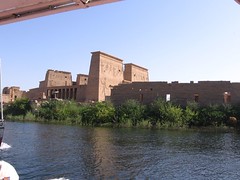
Philae Temple is a very late temple, not from the time of the great pharaohs at all. It was built by Ptolemies in the time after Alexander the Great. However, it's very Egyptian in style since the conventions in Egyptian art were pretty much the same as they'd been thousands of years previously.
Look! Smiting!
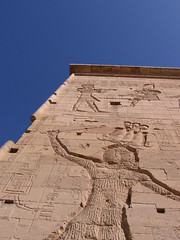
Philae was dedicated to the goddess Isis, who was worshiped there until the 500s when most of Nubia converted to Christianity. This temple was used as a church by those early Christians; their altar is still in place in one of the inner rooms:

This is why a lot of the images on this temple are defaced.
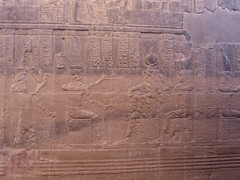
When you are practicing a new religion in the same building as your old religion, it's pretty important to help the faithful keep a clear line of distinction between "what we're doing now" and "what we did before". There was a lot of potential for confusion - for example, one of the most popular Egyptian religious images is of Isis suckling the infant Horus, which looks for all the world like the Madonna and Child. Anyway, it seems that the Christians were trying to reduce confusion among the flock by defacing the images of the pagan gods.
Also, when Nubia became Muslim, they defaced the church too. It's a wonder any of it is still intact, but some of it is!
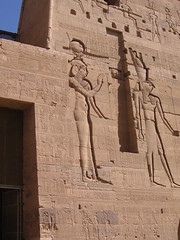
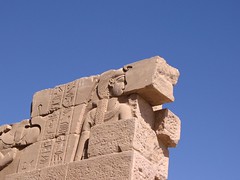
This temple has a Nilometer:
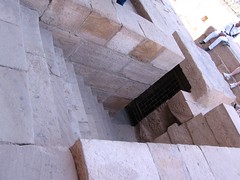
The floodwaters were measured relative to the stairway, and this number was used to set the taxes throughout Egypt. (Taxes were lowered or waived in years with poor floods.)
After wandering around the back of the temple:
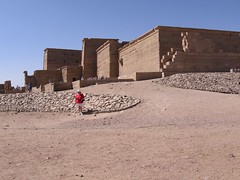
I went back inside to photograph a certain graffito.
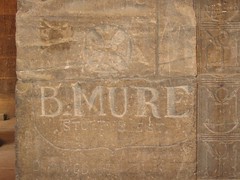
It reads, in one hand, B. Mure, and in another hand, Stultus Est. For those of you who've let your Latin get rusty, that is "B. Mure is stupid!" Mr. Mure evidently decided to carve his name in the wall, and someone else gave it his own interpretation.
I just like this view:
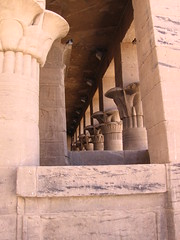
Seeking shade, Dad and I wandered out toward the entrance to the temple complex, and came upon the gift shop, where Dad spotted the last Necessary Souvenir: my boss Amy had asked me for a shot glass. (She collects them.) Since Egypt, being a Muslim country, is not big on alcohol, I almost despaired, but there on a dusty shelf stood a very nice one! Props to my sharp-eyed Dad!

No comments:
Post a Comment